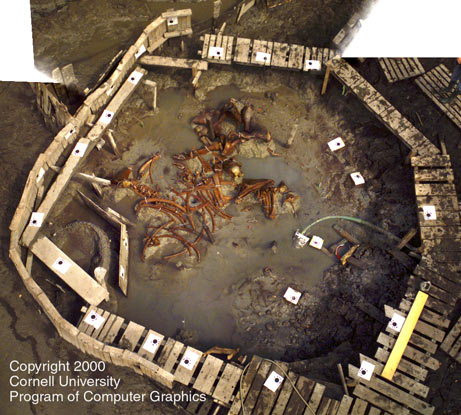.
 . By T.V. Antony Raj
. By T.V. Antony Raj
.

What does LOL, LMAO, ROFL, BRB, AFK, TY, THX etc. mean?
I hate Internet slang!
Internet slang refers to a variety of slang languages coined and popularized by internet users to save time on keystrokes. Internet slang saves the writer’s time, but most writers do not realize that the reader of the slang takes more than twice the time to understand what the writer is trying to say; that is why I hate Internet slang and I try not to use these slang words in my communications.
While surfing and searching the internet, I have come across many words used by the internet communities. Here, I would like to share some of them, and what they mean, with you. This list is not complete. It is difficult to provide a standardized definition of Internet slang due to the constant evolving of the gargantuan internet. If you are interested, there are many websites such as http://www.netlingo.com,where you can find more comprehensive listings.
A Listing of Internet Slang and Acronyms
Slang and Acronyms = Meaning
1 = One / exclamation mark
2 = To / Too / Two
4 = For or Four
403 = Deny Access To
A
AFAP = As Far As Possible
A&F = AAF Always And Forever
A3 = Anywhere, Any time, Any place
AAB = Average At Best
AAK = Alive And Kicking
AAMOF = As A Matter Of Fact
AAP = Always A Pleasure
AAR = At Any Rate
AAYF = As Always, Your Friend
ABD = Already Been Done
ABH = Actual Bodily Harm
ABT = Absolutely
ABT = About
ADL = All Day Long
ADN = Any Day Now
AEAE = And Ever And Ever
AEAP = As Early As Possible
AFAIAC / AFAIC = As Far As I Am Concerned
AFAICS = As Far As I Can See
AFAICT = As Far As I Can Tell
AFAIK = As Far As I Know
AFC = Away From Computer
AGW = All Going Well
ALOL = Actually Laughing Out Loud
ANY1 = Anyone
AYSOS = Are You Stupid Or Something?
B
B = Be
B4 = Before
Bb = Bye Bye, Goodbye
BBIAB = Be Back In A Bit
BBL = Be Back Later
BBS = Be Back Soon
BD = Big Deal
BRB = Be right back
BRB = Be right back / Bath-room break
BRT = Be right there
BTW = By the way
C
C = See
CSWS = Can’t Stop, Won’t Stop
CU = See you
CUL = See you later
Cuz = Because
CYA = See you
CYS = Check Your Settings
D
da = The
dat = That
DBA = Don’t Bother Asking
der = There
DIAF = Die In A Fire
Dunno = Don’t know
E
E123 = Easy as One, Two, Three
E2HO = Each to His/Her Own
EAK = Eating at Keyboard
ED = Erectile Dysfunction
EE or EEs = Employee -or- Employees
EFT = Electronic Funds Transfer
ELOL = Evil Laugh Out Loud
EM = Excuse Me
EMBM = Early Morning Business Meeting
EMFBI = Excuse Me For Butting In
EMFJI = Excuse Me For Jumping In
EMI = Excuse My Ignorance
EML = Email Me Later
EMSG = E-Mail Message
EOD = End Of Day -or- End Of Discussion
EOM = End Of Message
ESEMED = Every Second Every Minute Every Day
EWIE = mailing While Intoxicated
EZ = Easy
F
FHO = Friends Hanging Out
FTL = For The Loss
FTUW = For The Uber Win
FTW = For The Win
FWIW = For What It’s Worth
FYI = For Your Information
G
G2G / GTG = Got to go
GAL = Get A Life
GFY = Good For You
GG = Good game, Good going
GIYF = Google Is Your Friend
GRX = Gracias, Merci
H
HAND = Have A Nice Day
HS = Holy Shit
HTH = Hope This Helps
I
IACL = I Am Currently Laughing
IANAL = I Am Not A Lawyer
IANARS = I Am Not A Rocket Scientist
IC = I see
ICYDK = In Case You Didn’t Know
IDGI = I Don’t Get It
IDK = I Don’t Know
IIRC = If I Recall Correctly
ILY / ILU = I Love You
IMHO = In My Honest Opinion
IMNSHO = In My Not So Honest Opinion
IMO = In My Opinion
IRL = In Real Life
ITT = In This Thread
IYDMMA = If You Don’t Mind Me Asking
J
JJ = Just Joking
JK = Just Kidding
JOOC = Just Out Of Curiosity
JP = Just Playing
K
K = Okay
KKOk = Cool / Ok Kewl
KL = kool, cool
Kwl = Cool

L
L8r = Later
LLAH = Laughing Like A Hyena
LMAO = Laughing My Ass Off
LMFAO = Laughing My F*cking Ass Off
LOL = Laugh Out Loud
LQTM = Laugh Quietly To Myself
M
M8 = Mate
MYOB = Mind Your Own Business
N
NLS = Not Life Safe
NOYB = None Of Your Business
NP = No Problem
NSFW = Not Safe For Work
NVM = Never mind
NWS = Not Work Safe
O
O = Oh
O3 = Out of Office
OIC = Oh, I see
OJ = Only Joking
OMG = Oh My God! / Oh My Goodness!,
OC = Out Of Character
OP = Original Poster / Original Post
OT = Off Topic
P
PEBKAC = Problem Exists Between The Keyboard And The Chair
Pic = Picture
PITA = Pain In The Ass
Pix = Pictures
Plz / Pls = Please
PPMSLL = Pissing/ Pissed Myself Laughing
POSL = Piece Of ShIt
PPLL = People
PTTLL = Pop To The Loo
Q
Q = Queue -or- Question
QAP = Quick As Possible, Quickly As Possible
QL = Quit Laughing
QOTD = Quote Of The Day
QS = Quit Scrolling
R
RL = Real Life
ROFL = Rolling On The Floor Laughing
ROFLMAO = Rolling On The Floor Laughing My Ass Off
ROFLMAOL = Rolling On The Floor Laughing My Ass Out Loud
S
Shudda = Should Have
SMH = Shaking My Head
SNH = Sarcasm Noted Here
SO = Significant Other
SOS = Same Old Shit
Soz / srry = Sorry
SSDD = Same Shit, Different Day
STFW = Search The F*cking Web
sup = What’s up?
sup homes = What’s up, friend?
SWW = Sorry, Wrong Window – typing in the wrong box

T
Thnx = Thanks
Tho = Though
TIA = Thanks In Advance
TLTR = Too Long To Read
TTFN = Ta Ta For Now
TTYL = Talk To You Later
TTYT = Talk To You Tomorrow
TY = Thank You
TYT = Take Your Time
U
U = You
ULM = You Love me
V
VBD = Very Big Deal
W
W8 = Wait
Wanna = Want to
WB = Welcome Back
Wd = Well done
WDUWTA? = What Do You Want To Talk About?
Wile = While
WOOT = We Own the Other Team
WTH? = What The Hell?
WURSC = Wow, you are so cool
X
XLNT = Excellent
XME = Excuse Me
XOXO = Hugs and Kisses
XOXOZZZ = Hugs and Kisses and Sweet Dreams
XQZT = Exquisite
XTC = Ecstasy
XXCC = Kiss, Kiss, Hug, Hug
Y
YCM = You Copied Me
Ye = Yeah / Yes
YGTI = You Get The Idea
YMMV = Your Mileage May Vary
Yo = Hey / Your
YSVW = You are So Very Welcome
YW = You are Welcome
Z
ZZZ = Sleeping, Bored, Tired
.

.



 .
. 



















 However, the monthly, “Hindu Voice,” based in Mumbai (Bombay), published a retraction after readers alerted its editor P. Deivamuthu to the hoax. The editor said: “We are against spreading lies and canards,” and he added “Moreover, our readers are a highly intellectual class and will not brook any nonsense.”
However, the monthly, “Hindu Voice,” based in Mumbai (Bombay), published a retraction after readers alerted its editor P. Deivamuthu to the hoax. The editor said: “We are against spreading lies and canards,” and he added “Moreover, our readers are a highly intellectual class and will not brook any nonsense.”

